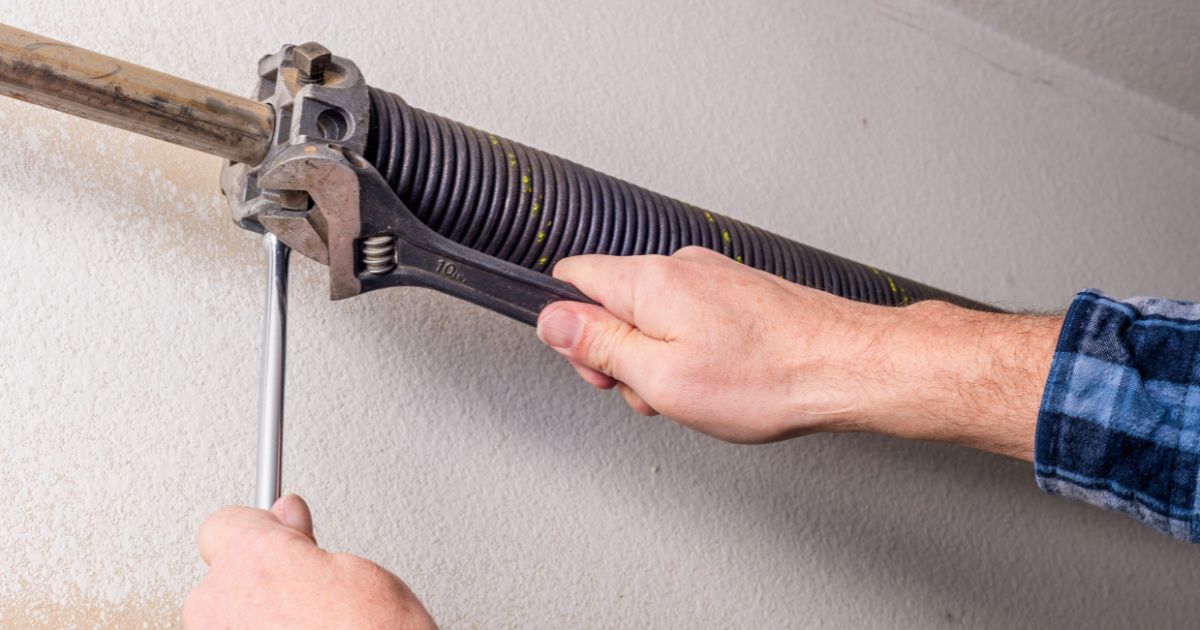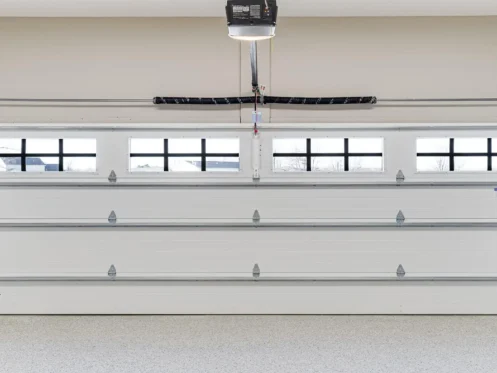Garage door springs are vital for smooth operation, providing tension to lift and lower your door. Over time, they can lose tension or become damaged.
In this guide, we’ll show you how to check the tension of your garage door springs, why it’s important, and what to do if you notice any issues.
Stay safe and keep your door running smoothly!
How to check garage door spring tension?
To check garage door spring tension, gently lift the door halfway. If it doesn’t stay in place, the springs may be too loose or too tight. A professional can adjust the spring to optimal tension, especially if you’re dealing with a torsion spring garage door that requires precise handling.
Key Takeaways
- Checking the tension of garage door springs is essential to ensure smooth operation and avoid unnecessary damage.
- A properly balanced garage door makes it easier for the opener to work and reduces wear and tear on the system.
- If you suspect a problem with the springs, it’s best to call a professional for adjustment or replacement.
Why Checking Garage Door Spring Tension is Important

Garage door springs are responsible for balancing the weight of the door, making it easier for the opener to lift and lower it.
If the spring tension is too tight or too loose, it can affect the operation of the door, causing it to become unbalanced.
This may result in issues such as the door not opening or closing fully, or making loud noises when operating.
By checking the spring tension regularly, you can ensure the door remains balanced, reducing the risk of mechanical failure.
Properly tensioned springs also extend the lifespan of the garage door system, as they help prevent unnecessary strain on the door opener.
Types of Garage Door Springs
Before we get into the process of checking the spring tension, it’s important to understand the two main types of springs used in garage doors:
1. Torsion Springs
Torsion springs are located above the garage door opening, mounted on a metal shaft.
These springs work by twisting to store energy when the door is opened and releasing it when the door is closed.
Torsion springs are generally used for heavier garage doors and offer more durability than extension springs.
2. Extension Springs
Extension springs are typically installed on either side of the garage door, above the horizontal tracks.
They work by stretching and contracting as the door opens and closes.
While these springs are common in residential garages, they tend to wear out faster than torsion springs and may not provide the same level of safety and durability.
How to Check Garage Door Spring Tension

Checking the tension on garage door springs is not a difficult task, but it does require caution.
The springs are under significant tension, and improper handling can lead to injury or damage. Follow the steps below to safely check the tension of your garage door springs.
1. Ensure the Garage Door is Fully Closed
Before inspecting the springs, ensure the garage door is fully closed. This is important because the tension in the springs is at its maximum when the door is in the closed position.
If the door is partially open, the springs may not be under the correct tension, and you might misinterpret the results.
2. Inspect the Springs for Visible Damage
Check the springs for any visible signs of wear or damage. Look for gaps, rust, cracks, or other issues that might indicate that the springs are losing their effectiveness.
If you notice any visible damage, the springs may need to be replaced.
3. Check the Spring Alignment
The springs should be aligned and positioned properly. If a spring is misaligned or out of place, it could affect the door’s balance and make it harder to operate.
In particular, torsion springs should be parallel to the shaft, while extension springs should run along the tracks.
4. Manually Test the Door
To test the tension, try lifting the garage door manually. If the door is properly balanced, it should stay in place when you lift it halfway.
If the door feels heavy or difficult to lift, it may indicate that the springs are not properly tensioned.
If you can lift the door with minimal effort, but it doesn’t stay in place, the springs could be over-tensioned.
Conversely, if the door is very difficult to lift, the springs may be under-tensioned.
5. Use a Level to Check the Door’s Balance
Once the door is halfway open, use a level to check if the door is balanced. Place the level against the edge of the door to see if it is straight.
If the door tilts to one side, this could be a sign of improper spring tension. A level door indicates that the springs are properly balanced.
Frequently Asked Questions
1. How do I know if my garage door springs need adjustment?
If the garage door feels heavy, hard to lift, or doesn’t stay in place when manually opened, the springs may need adjustment.
2. Can I replace my garage door springs myself?
Replacing garage door springs requires professional training due to the high tension involved. It’s safest to call a professional for spring replacement.
3. How often should I check the tension of my garage door springs?
It’s recommended to inspect your garage door springs annually to ensure proper tension and condition, as well as perform any necessary maintenance.
Conclusion
Checking the tension on your garage door springs is a vital part of garage door maintenance.
Ensuring that the springs are correctly balanced helps prevent damage to the door and the opener while ensuring smooth and efficient operation.
Regularly inspecting and maintaining your garage door springs—especially when adjusting double spring garage door systems—will prolong the lifespan of the entire setup, saving you time and money on repairs.
If you ever find yourself in doubt or need assistance, don’t hesitate to reach out to a professional to ensure the safety and functionality of your garage door.

